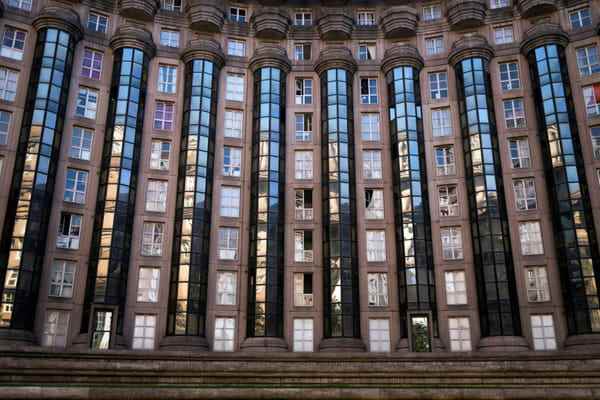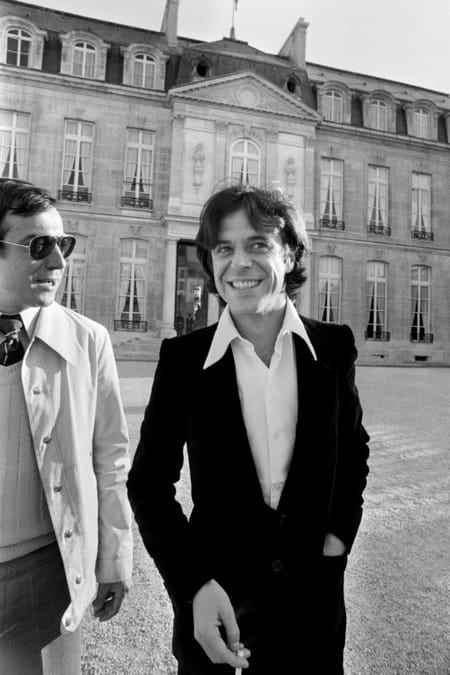“Star architect”, very renowned – but sometimes criticized – in France, the Spaniard Ricardo Bofill, who died Friday at the age of 82 from complications linked to Covid-19, signed hundreds of achievements around the world, with the obsession of putting the human being in the center of space.
“Architecture is man’s victory over the irrational”, he liked to say, driven by the obsession to create a different architectural “language” organizing space around the human being.
Over the course of his career, Bofill entered the very exclusive club of “star architects” to which Norman Foster, Renzo Piano and Jean Nouvel belong.
“The + star system + caught me in France in 1974. At that time, architects were beginning to be important, to have a preponderant role in society, and that forged a great reputation for me”, he said in a interview published in May 2020 by the Spanish daily newspaper ABC.
– Anti-Francoist –
Born on December 5, 1939 in Barcelona (north-eastern Spain) to a Catalan architect father and a Venetian mother, Ricardo Bofill Levi entered the city’s School of Architecture in 1957, from where he was expelled for anti-Franco activism, before continuing his studies in Geneva (Switzerland).

Spanish architect Ricardo Bofill, November 17, 2001 in Marseille, France
© AFP – Anne-Christine POUJOULAT
Back in his hometown, in a Spain still under the thumb of the dictator Francisco Franco (from 1936 to 1975), he joined other young intellectuals (architects, engineers, writers, filmmakers, sociologists and philosophers) in a group baptized the “Divine Left” and in 1963 created its architectural studio, the “Ricardo Bofill Taller de Arquitectura”.
This workshop, installed in an old cement factory on the outskirts of Barcelona, with branches in Paris, Montpellier (France), New York (United States), Tokyo, Chicago (United States) or Beijing, has signed more than 1,000 projects in the whole world.
– Whole neighborhoods in France –
We owe in particular to the workshop of Ricardo Bofill the airport of Barcelona, the National Theater of Catalonia, the Palace of Congresses in Madrid or the skyscrapers Donnelley and Dearborn in Chicago.
In France, where he is particularly appreciated, Bofill has signed large social housing complexes, such as the Espaces d’Abraxas in Noisy-le-Grand, in the suburbs of Paris, where several scenes from “Brazil”, a film cult of anticipation by Terry Gilliam (1985), or the Antigone district in Montpellier (south).
With the ambition to create urban utopias “in a highly monumental classical language on a scale never seen before”, writes Douglas Murphy in the book “Ricardo Bofill: Visions of Architecture”.
But on the ground, degraded and criticized by some residents, the Espaces d’Abraxas were almost demolished.
“Destroying them would be a lack of culture,” said Ricardo Bofill in an interview with the French daily Le Monde in 2014. While acknowledging that he had “failed to change the city”.
Made doctor honoris causa by the Polytechnic University of Catalonia last September, Bofill had then underlined that “faced with the dormitory town model”, he had made “the bet to create districts with mixed functions, but always defending the continuity urban, the street and the square” as a place of social life.
At a time when, in the United States in particular, city centers were disappearing to make way for cars and shopping malls.
– Tuareg villages –
Obsessed with the organization of space, Ricardo Bofill was inspired in particular by the Italian architect Andrea Palladio, from the Renaissance, or even by the French architects of the 17th and 18th centuries François Mansart and Claude-Nicolas Ledoux. But also Tuareg villages where this self-proclaimed “nomad” went to seek ideas at the start of his career.

The “Espaces d’Abraxas”, a set of buildings designed by Spanish architect Ricardo Bofill, on September 11, 2018 in Noisy-Le-Grand, near Paris, France
© AFP – Lionel BONAVENTURE
“I believe I know how to do two things: (…) design cities (…) and try to invent different architectural languages and never repeat them”, he underlined last June during a conference in Barcelona .
A rejection of repetition that made him love Antonio Gaudí, a Catalan like him, whom he described as “the greatest genius in history” who “never repeated two elements or forms”.
Rewarded by numerous international architectural prizes, Ricardo Bofill was an officer of the French Order of Arts and Letters.
All rights of reproduction and representation reserved. © (2022) Agence France-Presse

